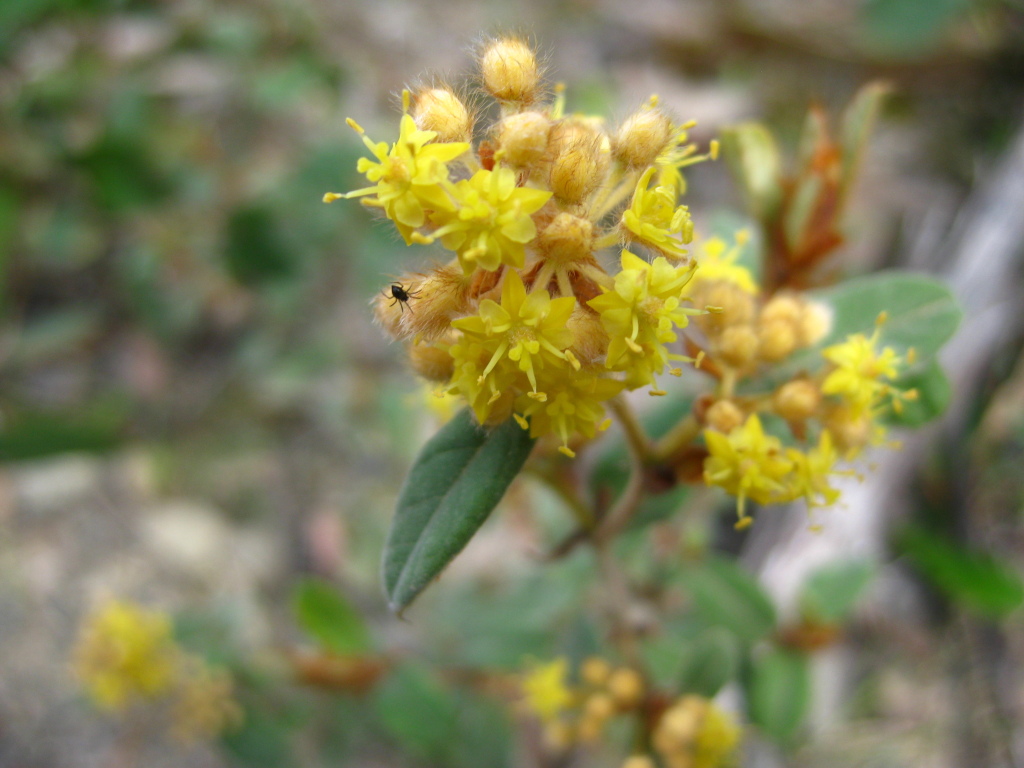Pomaderris aurea
N.A.WakefieldShrub 0.5–2 m high; branchlets loosely grey- or rusty-villous. Leaves ovate or elliptic, 15–50 mm long, 8–20 mm wide, obtuse or acute, upper surface subvelutinous with stellate and/or simple hairs, lower surface with sparse rusty, subappressed simple hairs (denser on veins) overlying dense greyish stellate hairs, secondary veins apparent; stipules 4–9 mm long, deciduous. Inflorescence a rounded or c. pyramidal panicle, c. 3–5 cm diam.; bracts deciduous or weakly persistent. Flowers golden yellow, greyish externally with close stellate, and mid-dense simple hairs; pedicels 2–3 mm long; hypanthium 1.4–1.8 mm long; sepals 2–2.5 mm long, deciduous; petals narrow- to broad-spathulate, 1.5–2 mm long; disc absent; ovary virtually inferior, summit simple-pubescent, style branched in upper half. Operculum membranous, c. half mericarp length Flowers Sep.–Oct.
GipP, CVU, NIS, EGL, EGU, HSF, HNF, VAlp. Apparently endemic in Victoria. Likely to be found in New South Wales. Scattered in dryish foothill forests and heathy woodlands in the east and north-east (e.g. Holey Hill, Stockdale, Jamieson, Bright, Beechworth, Corryong, Bruthen and upper Genoa River areas) ascending into wetter montane forests on and near the Nunniong Plateau and Mt Elizabeth.
A low, compact form occurs in the Holey Plains State Park and this form was once known as P. humilis. See notes under P. lanigera.
Walsh, N.G. (1999). Pomaderris. In: Walsh, N.G.; Entwisle, T.J., Flora of Victoria Vol. 4, Cornaceae to Asteraceae, pp. 85–109. Inkata Press, Melbourne.
 Spinning
Spinning
